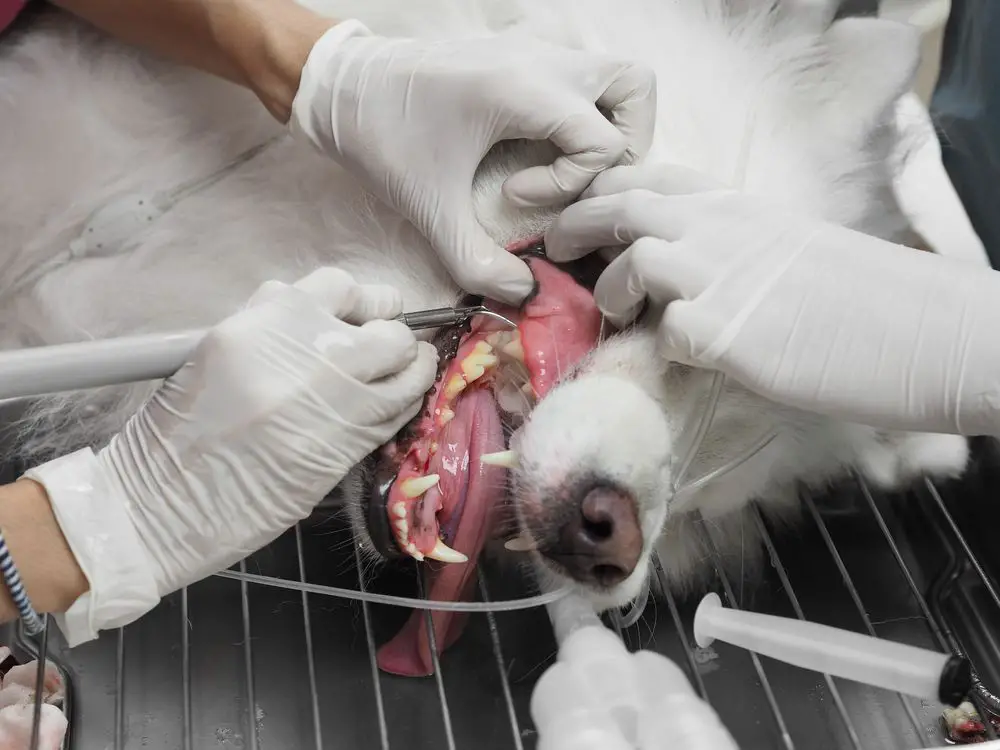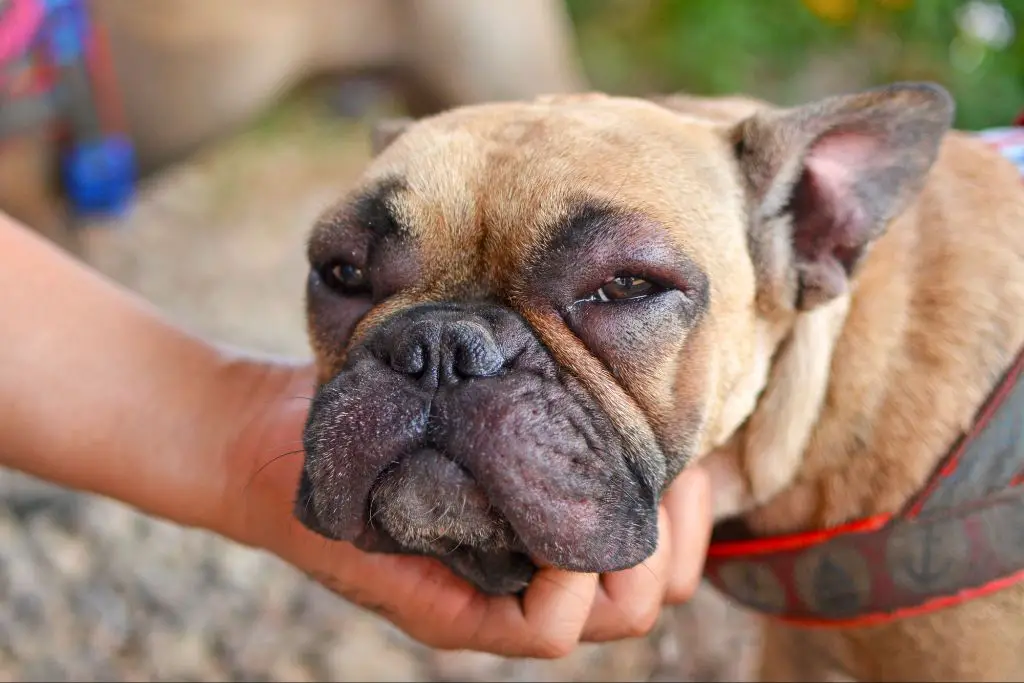Introduction
Dog’s teeth play an important role in their overall health and quality of life. Like humans, dogs have two sets of teeth in their lifetimes – deciduous (“baby”) teeth and permanent adult teeth. By around 6-7 months of age, a puppy will have all of its adult teeth. Proper dental care throughout a dog’s life is crucial to prevent issues like periodontal disease.
Sometimes, even with diligent dental care, dogs may still require extractions of one or more teeth. This could be due to advanced periodontal disease, injury, infection, or abnormalities in tooth development. The most common teeth requiring extraction are the upper carnassial teeth (upper fourth premolar and first molar). However, extractions of any teeth can pose challenges and risks.
Anatomy of the Canine Mouth
Dogs have a total of 42 teeth, with 20 teeth on the top jaw and 22 on the bottom. Each side of the upper jaw has 3 incisors, 1 canine tooth, 4 premolars, and 2 molars. The lower jaw contains 3 incisors, 1 canine tooth, 4 premolars, and 2 molars on each side.

The incisors are small, chisel-shaped teeth at the front of the mouth used for biting off pieces of food. Behind them are the larger canine teeth, which help grip and tear food. Premolars and molars have cusps and ridges useful for chewing and grinding food.
A dog’s mouth contains the maxilla (upper jaw) and mandible (lower jaw), which are connected by ligaments and muscles that allow the jaw to open and close. The temporomandibular joints on each side act as hinges where the maxilla and mandible meet.
Salivary glands produce saliva to help soften and lubricate food as the dog chews. The tongue is an important organ for licking, drinking, tasting, swallowing, and panting.
Most Difficult Teeth to Extract
When it comes to extracting teeth in dogs, the molars in the back of the mouth are often considered the most challenging. Molars have multiple roots, are larger in size, and are positioned further back in the mouth than other teeth.
Canines, or “fangs,” can also be difficult to extract given their long single root anchored deep in the jawbone. However, canines are generally easier to access than the rear molars.
Incisors, the small teeth in the front of the mouth, tend to be the easiest for vets to extract. They have short roots and their forward position provides better accessibility.
In summary, molars are usually regarded as the most difficult for tooth extraction in dogs, due to their size, multi-rooted structure, and far back placement in the mouth beyond other teeth.
Why Molars Are Most Challenging
Molars are typically the most difficult teeth to extract in dogs. This is due to several anatomical factors that make these teeth more complex to remove.
First, molars are multi-rooted teeth. Unlike incisors and canines which have a single root, molars have two to four roots embedded in the jawbone. This requires the veterinarian to carefully extract each root without leaving any fragments behind.
Additionally, the roots of molars lie in close proximity to major nerves and blood vessels. The roots are often intertwined with the inferior alveolar nerve and vessels that provide sensation and blood supply to the lower jaw. Great care must be taken not to damage these vital structures during extraction.
The complex and deep-seated root structure also makes molars more susceptible to complications like bone fractures during removal. Due to these multiple anatomical challenges, extracting molars demands advanced surgical skills and meticulous technique on the part of the veterinarian.
Canine Extraction Process
Extracting a tooth from a dog requires careful planning and skill. Here are the main steps involved in the extraction process:

Pre-Operative Exam
The veterinarian will perform a full oral exam, looking for signs of infection, tooth mobility, and other issues. They will also take x-rays to evaluate the tooth roots and surrounding bone.
Anesthesia
General anesthesia is necessary for extractions to prevent pain and keep the dog still during the procedure. The vet will induce anesthesia and monitor the dog throughout.
Tooth Extraction
The vet will use dental instruments to loosen the tooth and gently rock it back and forth to detach the periodontal ligament. They may need to section the tooth into pieces for removal. The vet sutures the extraction site closed.
Recovery
The dog is monitored until fully recovered from anesthesia. Pain medication is prescribed for several days after the surgery. The extraction site will take 2-3 weeks to fully heal.
Complications from Extractions

As with any medical procedure, extractions in dogs pose a risk of complications. Some of the most serious include nerve damage, bone fragments, and infection.
Nerve damage can occur if a tooth’s roots are closely intertwined with nerves. Extracting the tooth could sever or damage the nerves, resulting in neurological problems on that side of the dog’s face. This may lead to a loss of sensation or motor control in the lips, tongue, chin, or other areas.
Bone fragments can be left behind after an extraction, which may lead to infection or pain. Extensive bone removal may be required during the procedure to fully extract a tooth, weakening the jawbone. This increases the chance of future fractures in that area.
Bacteria inevitably enter the extraction site during the procedure. This leaves dogs vulnerable to developing infections in the socket or jawbone. Signs of infection include swelling, discharge, and extreme pain. Antibiotics may be prescribed to prevent or treat infection.
With proper surgical technique, sterile conditions, and antibiotics, serious complications are less likely. Still, nerve damage, bone fragments, and infections remain potential risks inherent to canine tooth extractions. Being aware of the possible complications can help dog owners make informed decisions regarding extraction.
Aftercare and Recovery
After a tooth extraction, dogs require adequate aftercare to manage pain, prevent infection, and ensure proper healing. The recovery period usually lasts 7-10 days. Here are some tips for caring for your dog after an extraction:

Pain Management
Your vet will prescribe pain medication, usually opioids like tramadol, or anti-inflammatories like carprofen. Give pain medication on schedule for the first 3 days, and then as needed for lingering pain. Restrict activity during this time to allow the extraction site to heal.
Antibiotics
Antibiotics may be prescribed to prevent infection. It’s important to give all doses as directed until gone. Signs of infection include discharge, swelling, and reluctance to eat. Call your vet if you notice these signs.
Diet Changes
Feed softer foods for 7-10 days after extraction. Canned food, soaked kibble, bone broths, and homemade blends are good options. Avoid hard chews or toys that could dislodge the blood clot. Stick to water for drinking as well.
When Extractions Are Necessary
There are several situations when a veterinarian may recommend extracting one or more of a dog’s teeth. The three most common reasons for canine tooth extraction are disease, injury, and crowding.
Dental disease is extremely prevalent in dogs, with over 80% of dogs over 3 years old suffering from some level of periodontal disease. Severe gum disease allows bacteria to infiltrate the tooth socket and jaw bone, causing infections, abscesses, and loose teeth. Extractions are necessary in these advanced cases of dental disease where the tooth is no longer salvageable.
Dogs can also suffer tooth fractures and other traumatic injuries from chewing on hard objects or trauma. Damaged teeth that cannot be repaired often need extraction to prevent infection from spreading to the bone. Additionally, some dogs are prone to enamel defects or abnormalities that lead to early tooth decay and the need for removal.
Finally, overcrowding is another reason for extraction. Dogs have 42 permanent teeth but some breeds have jaws too small to accommodate all the teeth. Incisors and premolars often grow in at odd angles, causing bite misalignment, gum impingement, and increased tartar buildup. Extracting overcrowded teeth allows the remaining teeth to align normally.
Alternatives to Extraction
In some cases, full removal of a tooth may not be necessary, and there are alternatives that can save the tooth.
One alternative is a root canal. During a root canal procedure, the infected pulp material is removed from inside the tooth, and the remaining void is filled and sealed. This preserves the tooth structure while removing diseased tissue. A tooth that has had a root canal can remain in place, though it is more brittle and may require a crown. Root canals in dogs have a high long-term success rate of over 90%.
Another alternative is getting a crown placed on the tooth. A dental crown covers the entire tooth and strengthens it. Crowns are indicated for teeth that are heavily worn, cracked, or have undergone a root canal. The crown protects the remaining tooth structure and prevents it from fracturing. Crowns can be made from materials like porcelain, gold, or stainless steel. They usually last many years with proper care.
Professional dental cleanings are also helpful for preserving teeth. Tartar removal and tooth polishing removes bacteria and plaque from the teeth. Regular cleanings allow problem areas to be identified early. The teeth and gums can be monitored and treated as needed to avoid more invasive procedures down the road.
In mild cases of disease, a deep cleaning and application of antibiotics or anti-inflammatory medication may help manage the issue. Stabilizing the infection can sometimes save the tooth.
Overall, working closely with a veterinary dentist provides the best chance of saving a diseased tooth. They can evaluate all options and determine if an alternative treatment is suitable, or if extraction is ultimately the best course of action.
Conclusion
In summary, the most difficult teeth to extract in dogs are the molars located in the back of the mouth. Molars have multiple hooked roots that embed them firmly in the jawbone, making extraction more complicated. Attempting to pull molars out directly can result in jaw fractures or leaving root fragments behind.
Due to the risks involved, it’s vitally important for dog owners to have extractions performed by an experienced veterinarian. They will utilize specialized equipment to gently loosen the tooth and guide it out while protecting the surrounding bone. This helps prevent future dental issues and ensures the dog’s comfort during recovery.
While tooth extraction may seem like a simple procedure, there are many variables to consider for the dog’s safety. Owners should follow all aftercare instructions closely and avoid attempting extractions themselves. With professional veterinary care, dogs can bounce back quickly from having their problematic molars removed.